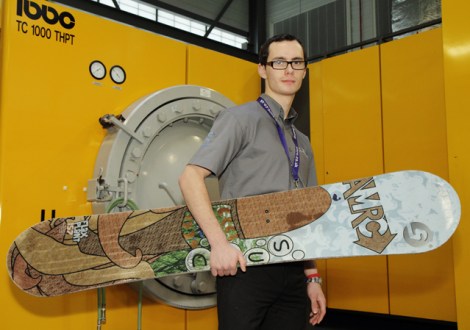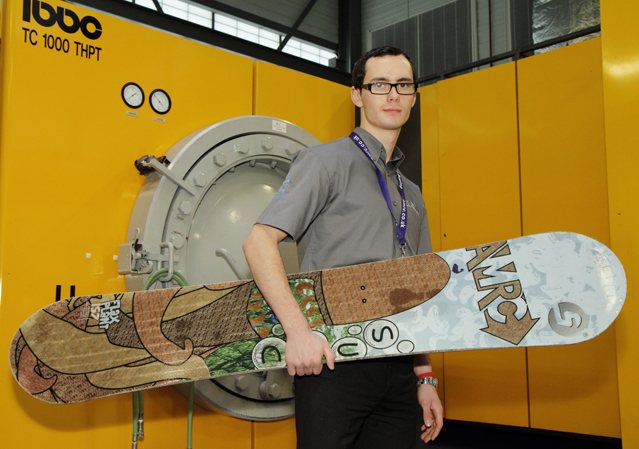
AMRC
The folks at the University of Sheffield’s Advanced Manufacturing Research Center have rather large fish to fry in the world of green vehicle manufacturing. They are looking to make cars, planes, that sort of thing, out of plant-based energy-efficient materials called biocomposites. But since there is a lot at stake in trying to introduce these new, lighter materials to very costly methods of transportation, they decided to start small. So they built a biocomposite snowboard.
The snowboard’s core is made of a material that uses recycled plastic and flax fiber. Then they covered it with a resin made out of cashew nut husk epoxy (please don’t consider yourself a complete idiot if you are shocked to learn that cashews even have husks and don’t always just grow in a can with other nuts), which is becoming popular in manufacturing and which you can read more about here.
The flax fibers used in the snowboard have some advantages over glass fibers. They are not as strong, but they are lighter and more flexible. One problem, however, is that they absorb water, which is obviously an issue for snowboards, cars, and airplanes alike. (The researchers are working on sealing the snowboard better to solve this problem.)
It is certainly fortunate that they are figuring out glitches with the new biocomposites using snowboards rather than cars — they’re cheaper, simpler to produce, and also more gnarly. Plus, one of the guys who worked on the snowboard project has some time off coming up and is going to Whistler to test it out. We’re guessing they wouldn’t let him joyride the first cashew-husk car.



